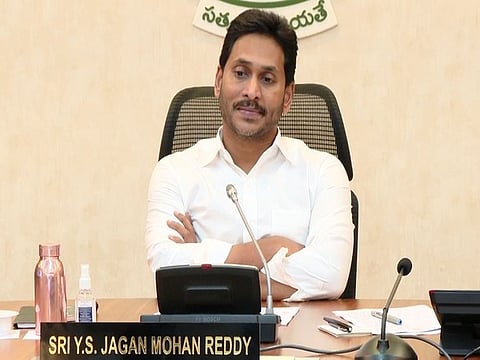
Amaravati- The recent Social and Economic survey, released by the Bihar government on October 2nd, 2023, has significantly impacted the political landscape, unsettling the BJP. There's now a nationwide call for caste surveys. During a rally in Madhya Pradesh, Rahul Gandhi stated that the Congress would contest elections advocating for OBC rights and the caste survey. Although the BJP appears hesitant about conducting a caste survey in its ruled states, Home Minister Amit Shah mentioned that the BJP isn't opposed to the survey but believes that election campaigning solely on this issue isn't appropriate.
Andhra Pradesh, following Rajasthan's footsteps, has approved a caste survey. The Congress-led government in Rajasthan previously sanctioned a caste survey, with the Department of Planning (Economic and Social) designated as the overseeing authority.
Chief Minister YS Jaganmohan Reddy expressed that this initiative would significantly contribute to uplifting oppressed communities, propelling their social empowerment to new heights. Reports indicate that the survey is scheduled to commence on November 21, marking the state's first such comprehensive census since the British-era 1931 enumeration. The state's power dynamics revolve around three influential castes - Reddy, Kapu, and Kamma. In the 2019 Assembly elections, these castes accounted for two-thirds of the MLAs, despite conservative estimates suggesting they represent less than a quarter of the state's total population.
Remarkably, the Reddy community, constituting less than 10% of the population, commands 49 out of 175 assembly seats, roughly 28%. Their influence is not only prevalent in the political realm but extends to significant representation in the realms of film, media, and various business sectors. Conversely, the Scheduled Caste population, primarily the Mala-Madiga community, constitutes about 16% of the state's inhabitants, with a majority enduring poverty-stricken conditions.
This census is expected to shed light on the prevailing disparities and provide a framework for rectifying the social inequities experienced by various segments of the population.
Karnataka's Chief Minister Siddaramaiah claims that his government was the first to conduct a caste census in the country, mentioning that the subsequent governments did not acknowledge the census report. The Karnataka Backward Classes Commission Chairman, Jayprakash Hegde, confirmed that the caste survey report would be submitted before November 24th. The State's Commission of Backward Classes conducted the caste census in 2015.
A report published in The Mint highlighted that the enumeration process spanned 45 days, engaging 160,000 individuals and covering 13.5 million households, at a cost of Rs 147 crore. The survey consisted of 55 questions to gather data related to caste composition, social, political, and economic status.
The Socio-Economic and Caste Census (SECC) was initially conducted in 1931, aiming to collect information on the economic status of Indian families in rural and urban areas to assess developmental indicators.
The primary aim of the caste survey is to identify disadvantaged groups and their population. This data is crucial for formulating policies, as the lack of information about these communities has often been cited as a hindrance in implementing development measures. In 2007, the Supreme Court scrapped the OBC quota in higher education, citing a lack of available data to provide 27% reservation to OBCs in higher education.
Speaking to The Mooknayak, Prof Sukumar Narayan from Delhi University said, " Mapping Caste Census is a good initiative by AP govt. It brings out the detailed report of community number that signifies contemporary political scenario. How ever at the same time the state should also map tha land ownership and poverty details of caste communities so that the purpose will be to achieve Social Justice. It might help across the caste communities. At national level and state level caste census will be a major political issue for political parties till 2024. But it should be viewed in the context of social and economic context."
Also Read-
You can also join our WhatsApp group to get premium and selected news of The Mooknayak on WhatsApp. Click here to join the WhatsApp group.